
Welcome to greenvillesnakes.com! I am David, a snake enthusiast living in Greenville, SC. Many people don't know that Greenville is in fact full of snakes! You just need to know where to find them - they can often be shy and elusive. Some South Carolina snake species are more common outside of the city limits, in different parts of Greenville County SC, but many types of snakes are indeed common in the more urban parts of Greenville. This guide is meant to help educate you about the beautiful snakes of Greenville, and to help you identify the most common snakes of Greenville, as well as the venomous snakes of Greenville that you should learn to recognize and avoid. If you want more detail, click here for my complete list of ALL snake species in Greenville. Remember the following:
- Most snakes of Greenville are harmless and don't want to encounter you
- Venomous snakes exist but are uncommon in Greenville, South Carolina
- Snakes eat rats and mice and are a valuable part of the South Carolina ecosystem
- Never kill a snake - if you leave a snake alone, it will leave you alone.
Common Snake Species in Greenville
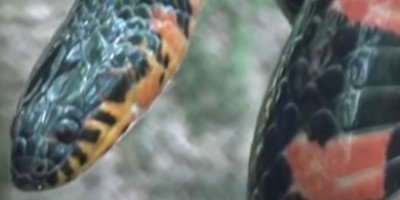 Mud Snakes:
The mud snake is a large, mostly aquatic, non-venomous snake that inhabits much of the southeastern United States, including most of South Carolina. This snake can get up to 7 feet long and have very thick, heavy bodies. Mud snakes have a shiny black back and a red-black checkered pattern on their belly side. Oftentimes their heads will have an orange or yellow color on them as well. These snakes prefer aquatic areas, such as ditches, swamps, lakes, and ponds, although they have been known to just take off across dry land as well. They are one of the most secretive snakes in the United States and are rarely seen because they hide so well. Nonetheless, they are common around the Greenville area.
Mud Snakes:
The mud snake is a large, mostly aquatic, non-venomous snake that inhabits much of the southeastern United States, including most of South Carolina. This snake can get up to 7 feet long and have very thick, heavy bodies. Mud snakes have a shiny black back and a red-black checkered pattern on their belly side. Oftentimes their heads will have an orange or yellow color on them as well. These snakes prefer aquatic areas, such as ditches, swamps, lakes, and ponds, although they have been known to just take off across dry land as well. They are one of the most secretive snakes in the United States and are rarely seen because they hide so well. Nonetheless, they are common around the Greenville area.
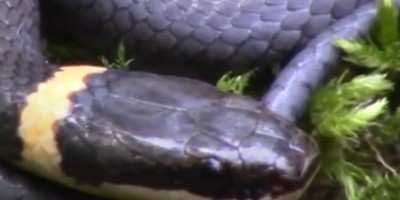 Ringneck Snakes:
Considered by most to be harmless to humans, the ringneck snake actually has a very mild venom that immobilizes its prey. There is both a northern and a southern ringneck snake, and both can be found in South Carolina. However, these species often mix, creating a variety of snakes with varying appearances and features. Any of these combinations have a characteristic light-colored ring around their neck, making it easy to identify them regardless of their body color. These snakes love to spend time in woodland habitats, as small mammals, birds, and amphibians are their preferred diet.
Ringneck Snakes:
Considered by most to be harmless to humans, the ringneck snake actually has a very mild venom that immobilizes its prey. There is both a northern and a southern ringneck snake, and both can be found in South Carolina. However, these species often mix, creating a variety of snakes with varying appearances and features. Any of these combinations have a characteristic light-colored ring around their neck, making it easy to identify them regardless of their body color. These snakes love to spend time in woodland habitats, as small mammals, birds, and amphibians are their preferred diet.
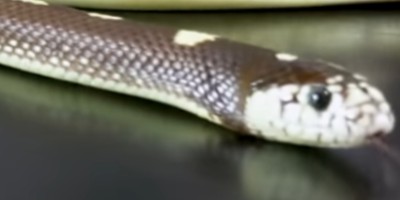 Kingsnakes:
The eastern kingsnake is one of South Carolina’s most common non-venomous snakes. Generally around 4 to 5 feet in length, the kingsnake has bright yellow rings on its otherwise black colored body. One of their best-known features is their ability to withstand venomous bites of the pit viper family of snakes. These constrictors kill a variety of animals, from small mammals and birds to venomous snakes like rattlesnakes and cottonmouths. It is for this reason that many believe kingsnakes are an excellent species to keep around.
Kingsnakes:
The eastern kingsnake is one of South Carolina’s most common non-venomous snakes. Generally around 4 to 5 feet in length, the kingsnake has bright yellow rings on its otherwise black colored body. One of their best-known features is their ability to withstand venomous bites of the pit viper family of snakes. These constrictors kill a variety of animals, from small mammals and birds to venomous snakes like rattlesnakes and cottonmouths. It is for this reason that many believe kingsnakes are an excellent species to keep around.
Venomous Snake Species in Greenville
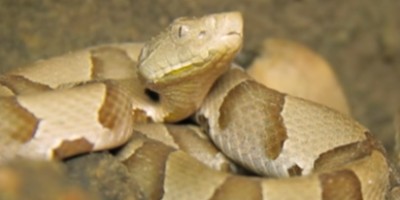 Copperheads:
The copperhead is one of the most common venomous snakes in the southeastern United States, and they have a strong presence in South Carolina. Most easily identifiable by its unique copper-colored head and body colorations, they can blend in quite well in nature. Most snake bites that involve copperheads happen when a human startles the snake and causes a reaction strike. These are often dry bites where venom is not injected, however there is always a good chance venom is injected, so it is important to always take precaution. These snakes are generally around two or three feet in length and can pose threats to humans. The most common food source of the copperhead is small rodents, amphibians, birds, and other reptiles.
Copperheads:
The copperhead is one of the most common venomous snakes in the southeastern United States, and they have a strong presence in South Carolina. Most easily identifiable by its unique copper-colored head and body colorations, they can blend in quite well in nature. Most snake bites that involve copperheads happen when a human startles the snake and causes a reaction strike. These are often dry bites where venom is not injected, however there is always a good chance venom is injected, so it is important to always take precaution. These snakes are generally around two or three feet in length and can pose threats to humans. The most common food source of the copperhead is small rodents, amphibians, birds, and other reptiles.
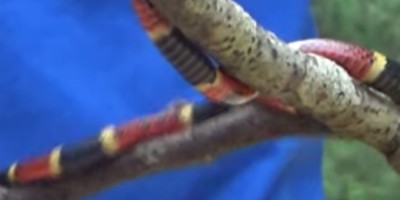 Coral Snake:
The eastern coral snake is one of the most deadly snakes that can be found in the United States. In fact, around 20% of bites from coral snakes end up being lethal, generally from antivenin not being applied soon enough to the victim. Unfortunately for residents of Greenville, the coral snake makes itself right at home in South Carolina. These snakes are easily identified by their red, yellow, and black rings around their body. They can often be confused with scarlet snakes common in South Carolina as well. Remember the following saying to help identify which is which: “red touches yellow, it can kill a fellow”, referring to the pattern of colored rings. The eastern coral snake is generally about 30 inches in length and has smooth skin. Coral snakes eat a variety of fish, amphibians, reptiles, and small mammals.
Coral Snake:
The eastern coral snake is one of the most deadly snakes that can be found in the United States. In fact, around 20% of bites from coral snakes end up being lethal, generally from antivenin not being applied soon enough to the victim. Unfortunately for residents of Greenville, the coral snake makes itself right at home in South Carolina. These snakes are easily identified by their red, yellow, and black rings around their body. They can often be confused with scarlet snakes common in South Carolina as well. Remember the following saying to help identify which is which: “red touches yellow, it can kill a fellow”, referring to the pattern of colored rings. The eastern coral snake is generally about 30 inches in length and has smooth skin. Coral snakes eat a variety of fish, amphibians, reptiles, and small mammals.
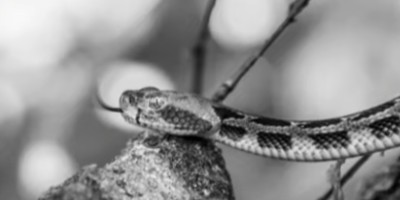 Rattlesnakes:
South Carolina is home to two different venomous rattlesnakes. The first of these rattlesnakes is the eastern diamondback rattler. This large snake is generally around 3 to 6 feet in length and can even be longer than that in some cases. These are highly venomous snakes that contain enough venom that they can potentially kill a grown man. The eastern diamondback is easy to identify because of its distinctive dark diamond pattern with light borders around it. Their heads are also triangular in shape and they possess pit viper heat-sensing pits on their faces. The second rattlesnake that is encountered in South Carolina is the pigmy rattlesnake. This smaller snake is around 1 to 3 feet in length and has a light background color on its body with dark splotches all around it. These snakes blend in very well in a variety of habitats and are venomous. Though their venom may not be as potent as the diamondback rattlers, it can still potentially be fatal.
Rattlesnakes:
South Carolina is home to two different venomous rattlesnakes. The first of these rattlesnakes is the eastern diamondback rattler. This large snake is generally around 3 to 6 feet in length and can even be longer than that in some cases. These are highly venomous snakes that contain enough venom that they can potentially kill a grown man. The eastern diamondback is easy to identify because of its distinctive dark diamond pattern with light borders around it. Their heads are also triangular in shape and they possess pit viper heat-sensing pits on their faces. The second rattlesnake that is encountered in South Carolina is the pigmy rattlesnake. This smaller snake is around 1 to 3 feet in length and has a light background color on its body with dark splotches all around it. These snakes blend in very well in a variety of habitats and are venomous. Though their venom may not be as potent as the diamondback rattlers, it can still potentially be fatal.
If you're unsure, you can email me a photo of the snake at info@greenvillesnakes.com and I will email you back with the snake's species. If you found a snake skin, read my Found a Skin? page, and you can email me a photo of the skin, and I'll identify the snake for you. If you need professional Greenville snake removal help, click my Get Help page, or see the below website sponsor I found, who provides that service.
Remember, the term is not poisonous snakes of Greenville, it's venomous snakes of Greenville. Poison is generally something you eat, and venom is injected into you. That said, dangerous snakes are very rare in Greenville. The few venomous snakes of Greenville County are rarely seen. But they are commonly misidentified, so learn about all the snake species of Greenville in order to correctly identify them. These snakes are usually also found in the surrounding towns of Simpsonville, Travelers Rest, Taylors, Mauldin, Five Forks, Berea, Wade Hampton, Tigerville, Slater-Marietta, Parker, Welcome, Sans Souci, Dunean, Gantt, City View, Judson, Golden Grove, and the surrounding areas.
Read our article about:
Things You Should Do When You Found A Shed Snake Skin
greenvillesnakes.com domain and hosting costs made possible by the generous support of this sponsor:
